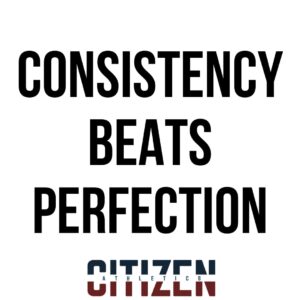You’ll hear coaches, trainers, and lifters of all kind talk about how training technique is make or break – it decides whether you will get max improvement or get injured.
We often talk about how to improve your technique on a lift – maximize your leverages, dial in your positioning, and be able to lift more weight.
This is absolutely something we encourage people to do.
However, this is a slippery slope.
We don’t want the hyper-focus on technique to come at the expense of actually pushing forward and improving.
A common story I hear is that people are just working on technique.
When I inquire what they’re talking about, they’ll tell me that they want to get their form perfect before adding weight.
At face value, this is great – people should take the time to learn what they’re trying to do before getting too gung ho on it.
Unfortunately, what I often see is people spending multiple sessions, multiple weeks, multiple months, or even multiple years working on “form.”
Now if you’re someone who is chasing down a specific goal where having the most ideal form is going to be highly required – such as competitive Olympic style weightlifting – this is probably beneficial.
Whereas for the majority of people, you’re likely holding yourself back from actually getting the results you probably want.
Most people aren’t looking to necessarily lift the absolute most amount of weight possible.
Most people want to be stronger.
Most people want to have more muscle and less fat – AKA “toned.”
Most people want to feel better & move better.
These goals take effort, they take challenge, they take pushing towards fatigue/failure.
Getting stronger requires a sufficient stimulus of neural demand to trigger a response in your body to learn to express more force or adapt for more capacity to create force.
To develop a better physique – particularly in the case of building muscle – requires putting in volume with a sufficient effective number of reps. This takes WORK.
If we continuously push to just get better technique but not improve our strength, power, muscle mass, increase our basal metabolic rate, improve our capacity, etc. we won’t reach those goals.
This doesn’t mean we throw technique/form out the window, but we need to understand balancing it with what our goals are.
The majority of people will benefit from having sufficient technique to do the movement with relative safety and then gradually start loading it while maintaining that technique – or gradually improving it.
If you can’t squat to full depth and have experimented with changing your foot width, toe angle, etc. then just work with what you can do and hold yourself to getting to at least that depth.
You’ll probably find in time that you can actually get lower with just steady loading and practice with progressive overload.
This same tenet applies to most movements.
Our overall body of literature is in agreement that we have a huge variance in what movement is safe for our bodies and it’s much more about how much of a change in work we do than it is what movement we do.
What does that mean?
Form is variable and that as long as you take a gradual progression in effort & volume, your risk of injury doesn’t really change by your exact lifting technique that much.
Instead, it’s when we have a big change in lifting form that we have a higher risk of injury because our body isn’t used to that challenge – this is amplified if its when you change “form” to what you believe is less safe.
For example, if you have been trying to learn how to deadlift but struggle with getting a “neutral” spine when deadlifting from the floor, you aren’t really at that much risk unless you have a significant change in load used, volume completed, effort reached, or a change in your technique.
Instead of being excessively worried about getting “perfect” technique, just start with where you are and get training.
Through doing the movement, and supportive movements, you’ll find that your technique will get better.
This is how we see practice work for most sports, train and do the best you can and put in effort towards improved technique along the way.
Consistency beats perfection.
Get out there and get training!
The Citizen Athletics Team,
Sam


